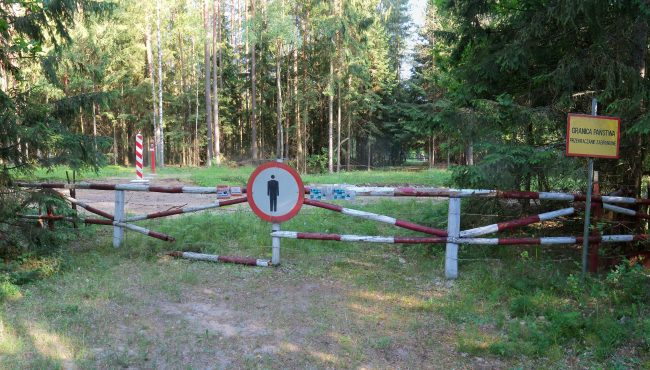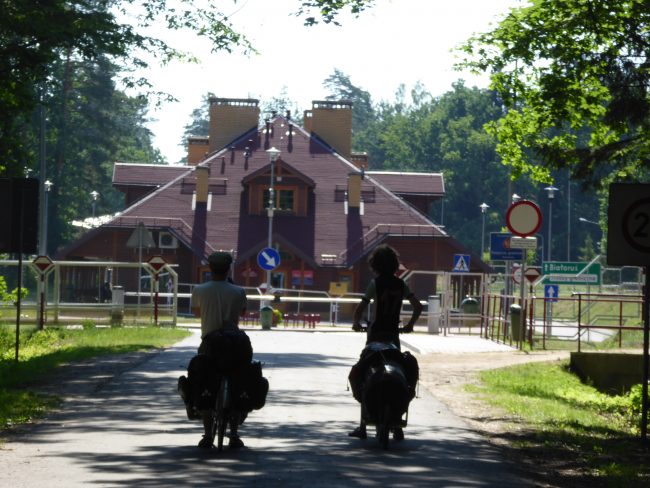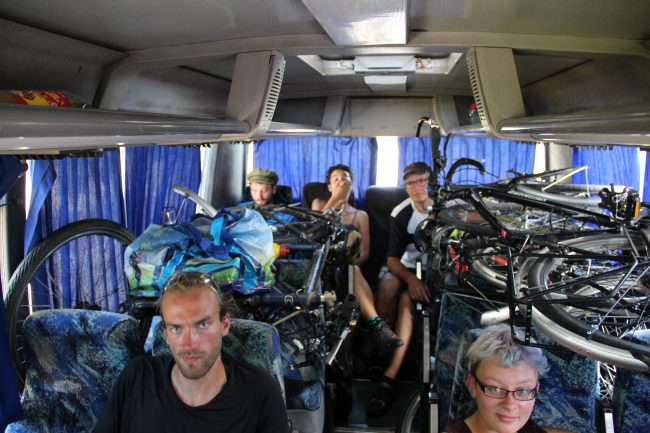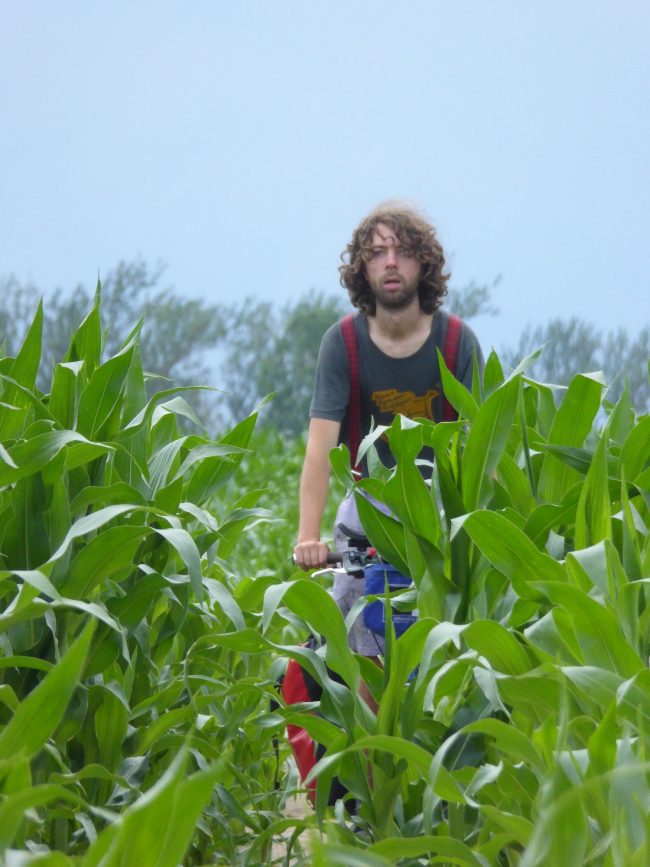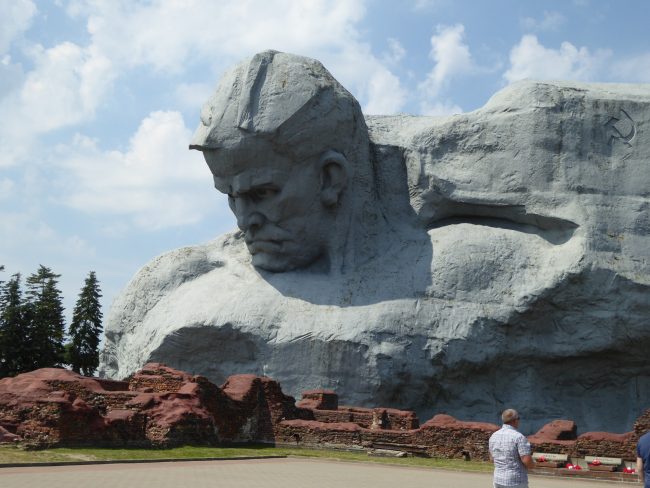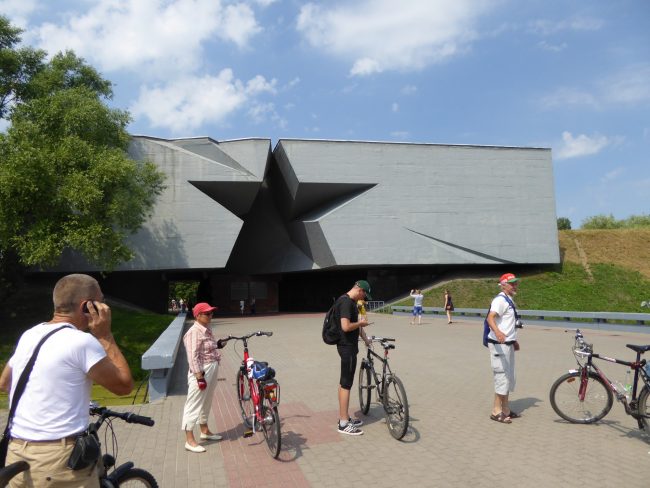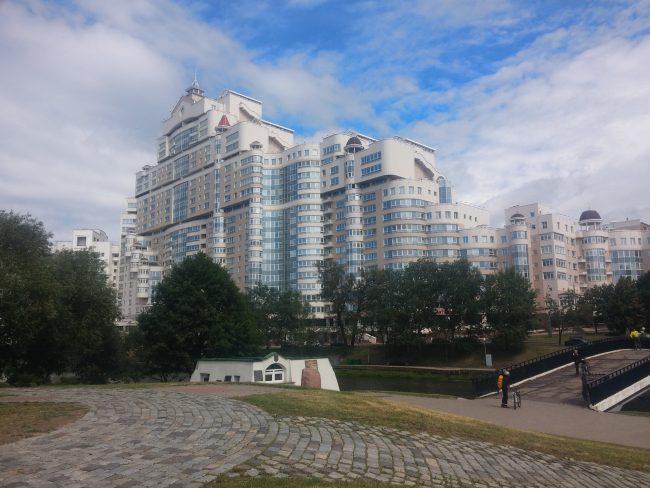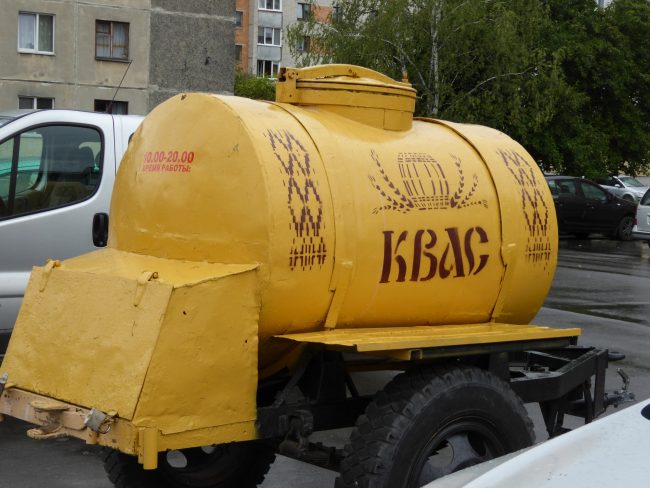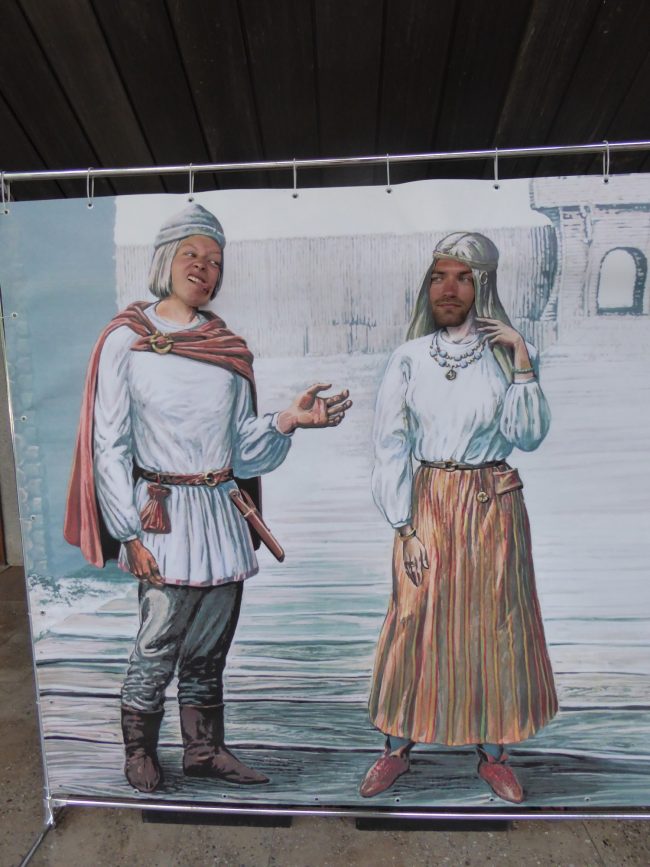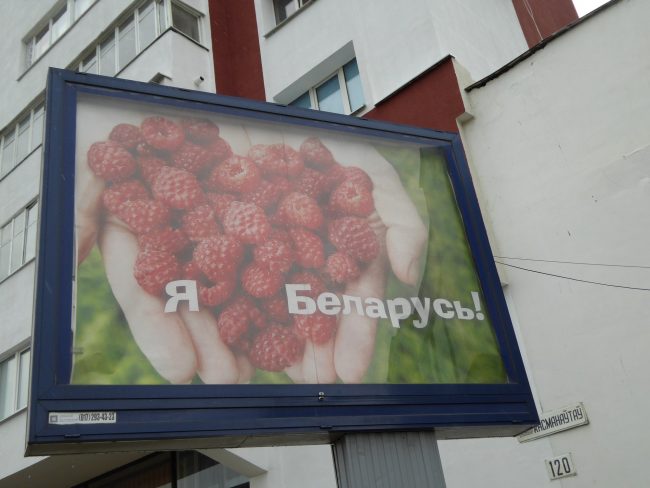As you might have read in our belarus border chaos blog post, getting into Belarus wasn’t easy for us, and our visa application was rejected several times, and then we were rejected on the border several times.
When we were preparing the tour, we were not finding a lot of information on how to do this, and the information that we found was often contradictory or simply wrong. Even the border police of Belarus themselves often gave us wrong information or didn’t know how things work. So here is the ultimate guide on how to get a group of cyclists into Belarus.
Visa requirements
Citizens of most countries require a visa to enter Belarus. There are several exceptions:
- Citizens of some countries can enter without a visa for a period of time.
- If just visiting the Pushcha Belovezhskaya (Białowieża Forest) national park on the border to Poland, it is possible to do so visa-free for 3 days. A permission has to be bought online beforehand, and a visit to the embassy/consulate is necessary anyways. Note that the border-crossing is bicycle/pedestrian only, and no pets can cross (see more below).
- There is a way to enter the Grodno region visa-free.
- When arriving by plane to Minsk, there is a way to enter visa-free for up to 5 days.
There are transit visas, short-term visas, and long-term visas (more information). For the purpose of cycling through Belarus, a short-term visa is the right choice. Theoretically, they can be valid for up to 90 days, but in practice, when requesting a visa for the purpose of tourism, it is advisable to not ask for more than 14 days.
The visa costs money. You only have to pay if the visa gets accepted. The fees are 60 € for an individual visa (25 € for citizens of Latvia, Lithuania, Poland, Estonia) and 10 € per person for group visas. All citizens of Serbia and Japan, citizens under 6 years of age of Latvia, Lithuania, Poland and Estonia, and citizens under 14 years of age of all other countries can get the visa for free. The visa will take at least 5 working days (so one week) to process, but there is the option to get an express visa for twice the price, where the visa will be issued in maximum 48 hours.
Any group of at least 5 people can apply for a group visa. This is what we have done, as it is far cheaper. The group visa will be issued as a separate piece of paper, not stamped into the individual passports, so the requirement is that the whole group crosses the border into and out of Belarus together. It is okay if some people on the visa are missing when entering Belarus, as long as the group entering and exiting Belarus is the same. I’m not sure if this can be used as a trick to get also smaller groups of 3 or 4 people into Belarus cheap.
Getting the visa
Needed documents:
- A filled out visa application form for each member of the group (see below for tips how to fill it out)
- A biometric photo, 35×45 mm, of each group member (nowadays most passport photo machines produce biometric photos)
- The passport of each group member, valid for at least 90 more days after the planned departure from Belarus (probably it is okay to just have the passport of the group leader and only copies of the group member passports, but we didn’t try that)
- An invitation letter (see below how to get it)
- A proof of health insurance that covers all days of your stay and at least 10000 € and states that it is valid in Belarus. Officially it has to be in Russian, but they normally accept English ones.
The visa has to be requested at a Belarusian embassy or consulate. A map can be found here. The different embassies differ greatly in their level of strictness. We were rejected several times at the embassy in Warsaw, but were accepted easily at the General Consulate in Białystok. The consulates in Białystok and Biala Podlaska are recommendable, they are very close to the border, have very short waiting times and are generally quite friendly with a high chance to get accepted. People there speak Russian, Belarusian and Polish, but no English. The inside is basically a room with some counters (like a ticket office in a train station), and you just queue up. It is totally okay to bring someone with you to translate, even if they will not be on the visa. It is allowed to bring electronic devices, only mobile phones have to be turned off.
For a group visa, one person has to be designated as the group leader, and this person has to go to the embassy to request the visa. Other people/group members can join the visit to the embassy, but it is not necessary.
To get the visa, you need to get an invitation letter from someone in Belarus. In theory, you can be invited by private people, by travel agencies, other companies, and by organisations. We tried first with an invitation from a local cycling club, but this did not work, as our story seemed too unusual to the people at the embassy. Being invited by private people also does not work for bigger groups, as everyone will have to officially sleep in their flat, and the local police will actually go to the flat beforehand to find out if there is enough space for such a large group to sleep. Also, it involves significant work and long waiting times at police stations for the people who invite you. What worked for us (incredibly easily after several failed attempts) was to go with the travel agency Vnesh Intourist. They booked one night in a hostel for us in Minsk and sent us an invitation letter, and we paid them 10 € per person for it (including the hostel). Usually, you need the original invitation letter (be aware how long the post can take!), but they just faxed it to the embassy. We didn’t actually have to sleep in the hostel, but it provided us an address to write in the visa application form, and it made us their client so they could invite us. (Note that it is actually advisable to stay in the hostel for the registration, see below.)
The visa application form needs to be filled out and signed by every group member. It has two pages, and you should make sure to fill out everything with the same pen and not cross anything out, as otherwise they might suspect that you changed something after the group member filled it out. Important parts of the form that are crucial to whether your application will be accepted are the purpose of visit (23) and the itinerary (30). For the purpose of visit, it is best to actually not give a detailed explanation like they request, but to simply write Tourism (if your invitation letter is from a tourist agency like in our case. If you are invited by a private person, it might be advisable to write something else like Private visit). We tried more detailed explanations, but they were rejected, because they created too many questions and doubts. For the itinerary, it it makes sense to write something credible, but not too detailed. We simply wrote Brest–Minsk. In theory, they need to know and have confirmation letters for where you sleep each night, but in practice it is enough if you have a place for one night and write that address into field 22 (in our case the one of the hostel that the tourist agency booked for us). For means of transport (29), we wrote Train+bike. It is not be advisable to only write bike, as they get worried about what happens if your bike breaks or you get an injury and can not cycle out of Belarus together with your group.
Every member needs to have health insurance for Belarus. If your health insurance doesn’t cover Belarus already, you will probably have to get an additional health insurance for abroad. Such insurances usually cover minor treatments, and a transport back to your home country (where your local health insurance will pay) for major treatments, so it is quite cheap, usually around 10–20 € per year. You can usually also buy them on the spot from a Belarusian company next to the embassy, but it will be two to three times more expensive.
Usually they will tell you right away whether your application is accepted or not. If it is accepted, they will give you a paper with which you have to go to a specific bank close by, where you have to pay the fees and then bring the receipt back to the embassy. As the fee is fixed in Euros, it makes sense to pay it in Euros. We paid it in Polish Złoty and paid around 10% for the conversion in that really old bank where they still used calculators and typewriters.
With a normal visa application, the visa should be ready after one week, but I’ve heard of stories where it took three weeks. In the Consulates in Poland it usually goes really fast, in our case (we applied for the express visa that should take maximum 48 hours), it was ready after 24 hours.
Crossing the border
Needed documents:
- Passport of each member of the group
- Group visa
- It is advisable to take the other documents, such as the invitation letter and the proofs of health insurance, although in our case they didn’t ask for this.
- For dogs that are travelling with you, the European pet passport with a valid rabies vaccination and a health certificate (see more below)
Crossing the border is not as easy as you would think. In Belarus, cycling is officially forbidden on most roads (don’t worry, it is accepted anyways), and so is crossing many border checkpoints by bike. To find out which border crossings are open for bikes, open the map or list of border crossings, go to the details of an individual one, scroll down to the “Checkpoint layout” map. Below that will be written either “It is allowed to cross the State Border by bicycle.” or “It is not allowed to cross the State Border by bicycle.”. Unfortunately, in some cases, the English translation is wrong, so better double check on the Russian version whether it’s невозможно (impossible) or возможно (possible) to cross by bike (or use Google Translate). Not that some borders are closed at night, and some are sometimes closed for construction for several months.
If you want/need to use one specific crossing that doesn’t allow bikes, it can be possible to cross it by train/bus instead. As we couldn’t find out whether the border checkpoint at Brest central station had a veterinary, we crossed the border by using a local bus from Terespol to Brest. Note that in these regions, trains usually go maximum two or three times per day.
If animals are travelling with you, it is necessary that there is a veterinary at the border (who will do nothing else than read the papers of your animal). You can find this out by looking if there is a “Veterinary control” under the “Types of control” in the checkpoint details. As far as I know, the crossing in the Białowieża forest is the only one that doesn’t have a vet. As usual, dogs and cats need a European pet passport, a microchip, and a valid rabies vaccination at least 3 weeks old. In addition, they need an official health certificate that is maximum 10 days old. This means that you will most probably have to get it in Poland or whichever country you are crossing into Belarus from. Officially, this certificate needs to be done by a state veterinary. Usually, this means going to the veterinary department of a local city council, where they will look at the pet passport, write down that in the passport there are valid vaccinations in a separate document, put a stamp on it, and charge you 10 € for it (the animal doesn’t even have to come with you). In some countries (not in Poland), they require you to go to a local vet first that examines the health of the animal. Getting this certificate was difficult for us, as it was not easy to find the veterinary department and to make them understand what we want (even for a Polish speaker). In the end, they did actually check the health certificate at the border (as opposed to most other countries), but it would have been enough to get one from a normal vet that just stamps in the passport that the animal is fit to travel.
Registering
When entering Belarus, you will get an immigration card (a small piece of paper) where your entry and exit and you sleeping places in Belarus will be stamped.
Officially, you need to register with the local police station of the town where you are staying within five days. Every time you move to a different place, you need to register there again. This would involve going together with your host to a local foreigners office (if it’s open at all), queue there for the whole day, and then sign some papers in Russian to get a stamp in your immigration card. Or, if you were sleeping in a hotel (that had a license to host foreigners!), they would have the stamp to put in your immigration card. All of this is obviously completely unpractical if you are moving around and wild-camping.
In practice, it is enough if you have one stamp for one night in your immigration card. Ideally, this stamp should be made less than 5 days after you enter Belarus. We tried to ask some hotels to stamp us without sleeping there, but they wanted ridiculous money like 20 € per person per night for it. The best would be to sleep in a hostel/hotel for one night, but be aware that some hostels/hotels don’t have the license to host foreigners and thus cannot stamp you. As mentioned above, the easiest is to book a hostel through a tourist agency, which will get you the invitation, address of stay, and registration stamp all at once.






